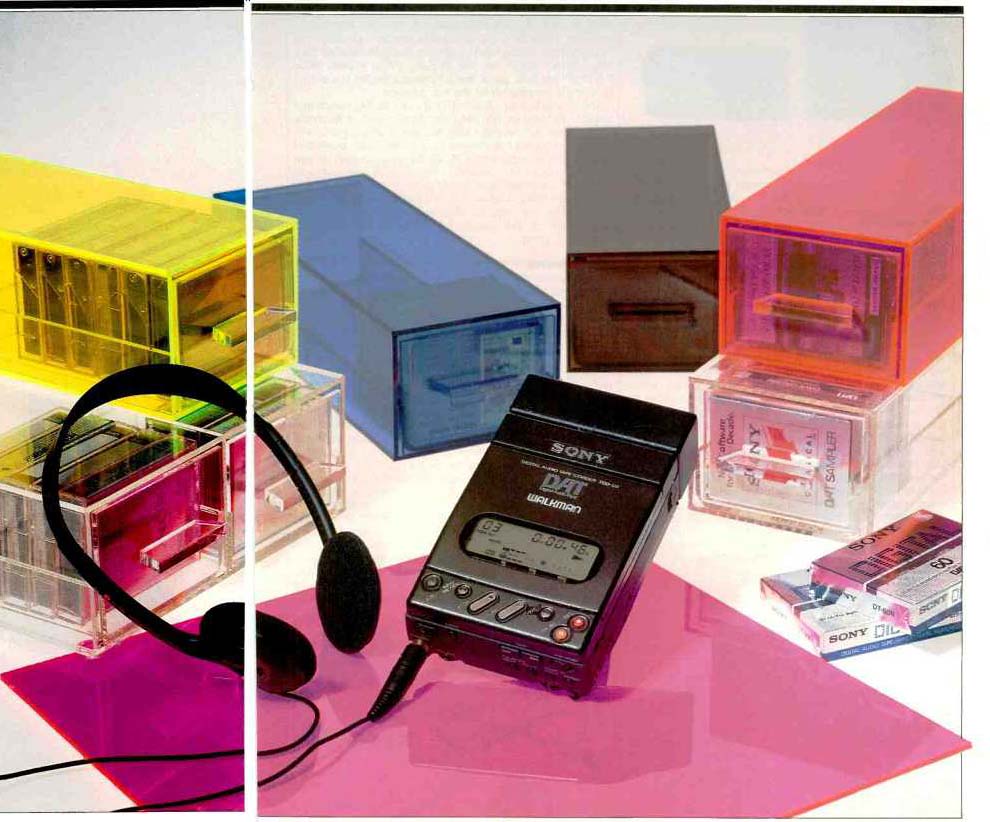
Manufacturer's Specifications:
Frequency Response (±1 dB): 48-kHz sampling, 20 Hz to 22 kHz; 44.1-kHz sampling, 20 Hz to 20 kHz; 32-kHz sampling (standard or LP mode), 20 Hz to 14.5 kHz.
Signal-to-Noise Ratio: Greater than 90 dB, all modes.
Dynamic Range: Greater than 90 dB, all modes.
THD: Less than 0.008% at 1 kHz, standard mode.
Power: 6 V d.c. with rechargeable, supplied battery; 9 V d.c. with supplied a.c. adaptor or optional car mounting arm.
Battery Life: Approximately two hours
Battery Charge Time: One hour (two hours when unit is operated with a.c. adaptor/charger).
Dimensions: Without battery, 3 3/8 in. W x 1 3/8 in. H x 4 3/4 in. D (8.5 cm x 4 cm x 12 cm); battery adds 1 inch (2.58 cm) to depth.
Weight: Without battery, 14.8 oz. (0.42 kg); with battery, 1 lb., 6.2 oz. (0.63 kg).
Price: $849.95.
Company Address: Sony Dr., Park Ridge, N.J. 07656, USA.
Check out those dimensions again! It's not a misprint. Sony has come up with what is surely the world's smallest (and, I might add, the world's most remark able) portable DAT recorder/player. The company has chosen to call it--rightly enough--a DAT Walkman. In fact, it's actually smaller than the first Walkman that Sony introduced some 11 years ago. When I first was told about this little portable recorder, I feared that Sony might elect to call it a "DATman." Happily, better judgment prevailed! The TCD-D3 is capable of recording and playing back at sampling frequencies of 48, 44.1, or 32 kHz. It also offers a long-play mode that provides up to four hours of continuous recording or playback, using a standard 120-minute tape.
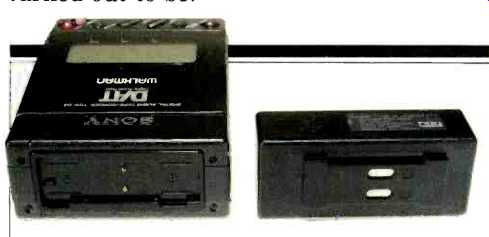
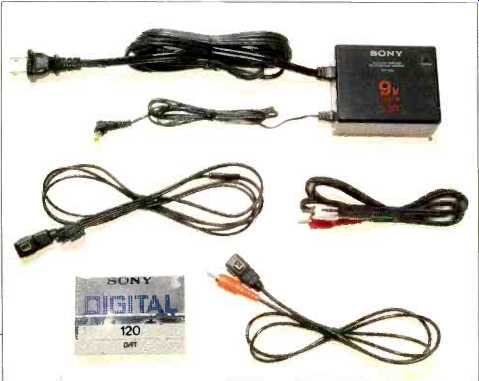
And, of course, in accordance with international standards and agreements reached between software and hardware makers, the TCD-D3 incorporates the Serial Copy Management System (SCMS), which will not prevent making a first direct digital-to-digital copy from a digital source (CD or prerecorded DAT) but will prevent making second-generation copies from that first copy. One of the design features that made this degree of miniaturization possible is a tape head drum only 15 mm in diameter, half the diameter of drums used in typical hi-fi DAT decks. The use of the smaller drum requires a tape-to-drum contact of 180°, as opposed to the 90° of tape contact normally used. However, while head and tape wear are expected to be slightly greater than on home DAT decks, the contact pressure of the tape to the fast-spinning head drum is still far less than is encountered in video recorders. Also, unlike portable CD players, the new DAT mechanism maintains accurate recording and playback even when the recorder is in motion. During my tests, I was able to walk at a brisk pace and even jog while listening to a DAT recording.
Four-layer, surface-mount circuit boards aid in the miniaturization of the TCD D3. Large-scale integrated circuits (LSIs) designed by Sony handle all digital-signal processing, servo control, and digital-signal amplification. These LSIs help to reduce power consumption and account, in part, for the fact that battery power can operate the unit, either in the recording or playback mode, for a full two hours. The TCD-D3 employs a pulse A/D converter with 64-times oversampling.
During playback, an eight-times oversampling digital filter maintains extended frequency response and good phase linearity, while D/A conversion is accomplished by dual 18-bit converters. All digital conversion is built directly into the unit, and no outboard processing is necessary.
The TCD-D3 is supplied with a rechargeable nickel-cadmium battery, an a.c. adaptor/charger, a fiber-optic digital input/output cable, analog audio connecting cords, a 60-minute blank DAT cassette, and a soft carrying case.
Control Layout
Considering the unit's small size, it's amazing how many controls Sony was able to provide without having them so closely spaced that human fingers would be unable to access them easily. The controls most often used are conveniently mounted on the top surface of the unit. These include a cassette "Eject" button, an "REW/Review" button, somewhat larger "Stop" and "Play" buttons, and buttons for "FF/Cue," "Pause," and "Rec." The fast-wind buttons serve a dual purpose. During playback, they are used for audibly fast searching in either direction. When pressed while in the stop mode, they fast-wind the tape in either direction. An LCD on the top surface of the unit shows program numbers, various time indications, and current status of the tape transport. The display also includes a dual-channel level meter, calibrated in dB on the scale itself and in percentage of maximum recording level on the surrounding bezel. Unlike many LCDs, which become virtually invisible in dim light, this one is wisely equipped with a pleasing blue backlight that can be turned on only when needed, thereby prolonging battery life.
The backlight pushbutton for the display is on the vertical front of the unit, as are the power switch, a miniature stereo headphone jack and its level control, a pair of buttons for "AMS" (Automatic Music Search) that quickly access specific programs or selections on a tape, and a record level control (used only when analog inputs are being fed to the unit). Also found on this surface are buttons for "Counter" time ("Mode" and "Reset") and "Start ID"("Mode" and "Enter"). Sequential pushes of the "Start ID Mode" button let you apply Start IDs automatically or manually, erase Start IDs, and renumber programs of a previously recorded tape.
The left side panel of the TCD-D3 is equipped with a miniature seven-pin connector. It is here that the digital input/output cable is connected for taping from sources with digital outputs or for feeding signals to components with their own D/A converters. Interestingly, this connector accepts either fiber-optic or coaxial digital cable. The optical cable supplied to me (but not the one sent to Audio for photography) had separate branches for input and output, while the single-ended coaxial cable was for input only. The plugs of both cables had mysterious switches labeled "Analog/Digital," which no one at Sony could explain. Also found on this side panel are a miniature stereo line output jack and a connection for the a.c. adaptor.
The opposite side of the TCD-D3 carries the switch that selects standard or long-play operating mode. A miniature stereo input jack on this panel handles analog inputs, with switches to select line or microphone sensitivity levels and to attenuate the input signal by 20 dB when needed for use with high-output microphones. The TCD-D3 also supplies d.c. phantom power to an optional stereo microphone.
When a battery is used, it snaps into place at the rear of the TCD-D3. The battery's width and height match those of the recorder, so that it looks like an integral part of the unit when it's in place.
Measurements
I measured the TCD-D3's performance for both analog and digital inputs, using the analog outputs throughout. I also tested its performance in the LP mode, in which sampling rate is reduced to 32 kHz and a 12-bit nonlinear quantization system is employed. I suspect that most users of this recorder will be feeding signals via its analog inputs (microphone, for example, for live recording work in the field), so I concentrated a bit more heavily on the measurements made via the analog inputs.
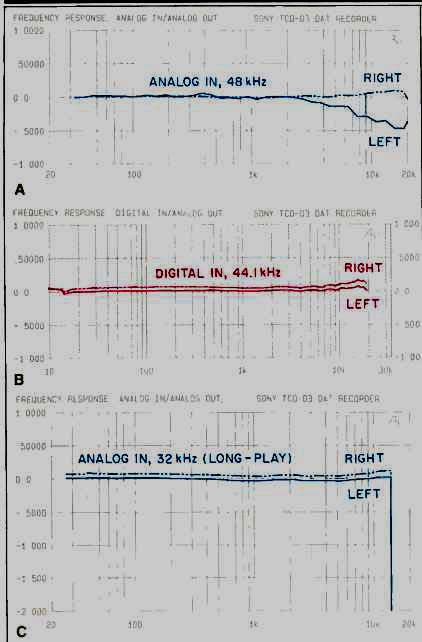
Fig. 1-Frequency response at maximum recording level for analog inputs in
normal, 48-kHz mode (A), via digital input at 44.1 kHz (B), and via analog
inputs in long-play (32-kHz) mode (C).
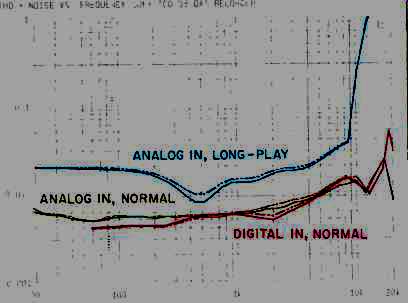
Fig. 2--THD + N vs. frequency at maximum recording level. Solid curves are
for left channel, dashed curves are for right channel.
Figure 1A shows the record/playback frequency response of the unit for analog input and output signals in normal (48-kHz) mode. In this mode, the left-channel response is off by about 0.5 dB at 20 kHz, while right-channel response is virtually flat from 20 Hz to 20 kHz, deviating by no more than 0.1 dB. Using the digital input and a sampling rate of 44.1 kHz (Fig. 1B), such as the TCD-D3 would use when transcribing a CD in the digital-to-digital mode, response from 20 Hz to 20 kHz is even more uniform than in the analog, 48-kHz mode. The response limitation imposed by the long-play mode (Fig. 1C) is clearly evident, however.
In comparing these frequency responses, bear in mind that the LP mode is still quite useful when transcribing such program sources as FM or TV stereo broadcasts, both of which have about the same frequency limitations as that imposed by the LP mode's 32-kHz sampling rate. Furthermore, the dynamic range of a 12-bit nonlinear quantization system, such as that used in the LP mode of this and other DAT recorders, far exceeds the dynamic range of either FM radio broadcasts or stereo TV sound transmissions. There fore, there is no reason not to economize on the cost of blank DAT cassettes by using the long-play mode when recording such fare.
Applying a sweep-frequency test signal to the inputs of the TCD-D3, I next measured THD + N versus frequency for signals recorded at maximum recording level. Results are shown in Fig. 2. Using the analog inputs and the normal recording mode, THD + N at 1 kHz is only 0.006%, as against Sony's specification of 0.008%. Small amounts of harmonically unrelated artifacts, including some spurious "beats," cause the plot to rise at the higher frequencies, but even at that, worst-case combined readings of noise and distortion never exceed 0.025%. In the LP mode, with its 12-bit nonlinear quantization. THD + N is, as expected, some what higher: 0.014% at 1 kHz. Notice also that it rises very steeply above 8 kHz. Using the digital input, THD + N at 1 kHz is a shade lower than for normal-mode recording via the analog inputs, approximately 0.0055%.
The previous tests show noise plus distortion, but I wanted to be able to separate the actual harmonic distortion components from the noise components. Therefore, I used FFT spectrum analysis to examine a 1-kHz test signal, and results of these tests for recordings made via the analog inputs are shown in Fig. 3A. For a signal recorded at maximum level (0 dB), significant harmonics are seen at 2, 3, 9, and 11 kHz, but the largest of these (the second harmonic, at 2 kHz) represents THD of only 0.0042%. Even calculating net THD by taking the square root of the sum of the squares of the other, lower amplitude harmonic components, actual THD turns out to be less than 0.005%. For a 1-kHz signal recorded at 60 dB below maximum level, major harmonic distortion components amount to 0.7% of the reference signal, while the residual noise floor is at approximately 0.1% of reference. With the digital input, results for a 0-dB signal (Fig. 3B) are very slightly better than for a 0-dB signal via the analog inputs, primarily because of the relative sizes of the two curves' second-harmonic spikes.
Figure 4 is a plot of THD + N versus recorded signal amplitude. Using the analog inputs, THD + N in normal (48-' kHz) mode measures approximately-90 dB (about 0.003%) for recording levels of approximately-10 dB or lower. Note that although THD begins to rise as the 0-dB mark is approached, the real digital recording headroom limit is not reached until a level of +6 dB, at which point the curve climbs almost vertically. What this told me is that, to be on the safe side for users who are accustomed to allowing recording meters to go above 0 dB when using analog recorders, Sony really calibrated the meter's 0-dB point a few dB below the actual brick-wall limit imposed by 16-bit digital sampling. Still, I would suggest that anyone using the TCD-D3, or any other DAT recorder, not go above the arbitrary 0-dB point calibrated by the manufacturer when making digital recordings via the analog inputs.
Having established that 0 dB on the meter does not really correspond to absolute maximum digital recording level, I repeated the test, this time applying signals via the digital input (also seen in Fig. 4). At levels of -20 dB and lower, THD + N is about 5 dB lower than when the analog inputs are used. The rise in THD + N above-20 dB is attributable to limitations of the analog output stage rather than anything relating to the recorder's digital circuitry. In any case, even at 0 dB, THD + N is still about 90 dB below indicated maximum recording level.
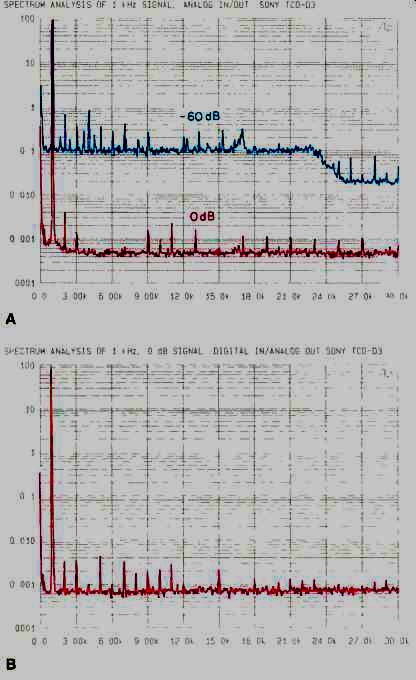
Fig. 3--Spectrum analysis of 1-kHz signal recorded at 0-dB (maximum) level
and -60 dB for analog inputs (A) and at 0 dB via digital input (B). Curves
shown are average of 16 acquisitions, to help distinguish between noise and
coherent signals.
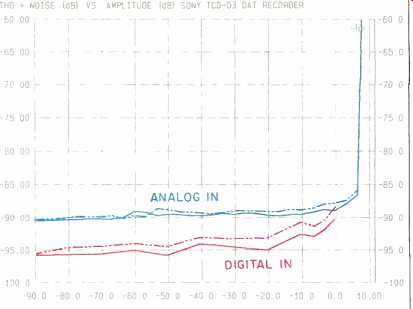
Fig. 4--THD + N vs. signal amplitude for analog and digital input signals.
Solid curves are for left channel, dashed curves are for right channel.
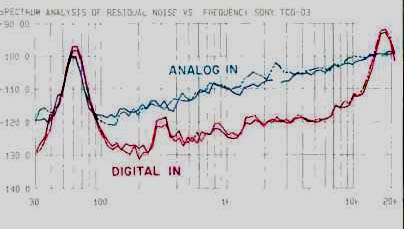
Fig. 5--Spectrum analysis of residual noise, with no signal applied, via analog
and digital inputs. Solid curves are for left channel, dashed curves are for
right channel.
Overall A-weighted S/N ratio of the TCD-D3, measured via the analog inputs and outputs, was 90.8 dB for the left channel and 90.5 dB for the right channel. Recording a no-signal track via the digital input resulted in a considerably higher S/N ratio, 102.5 dB at the left-channel output and 102.8 dB at the right-channel output.
Figure 5 shows a 1/3-octave spectrum analysis of residual hum and noise, referred to 0-dB recording level, when no-signal recordings were made via the analog and digital inputs and played back. The peak at 60 Hz in the analog-input curve, while all of- 100 dB, is attributable to the influence of the a.c. adaptor that was used to power the recorder/player during this test. With battery operation, this peak, however small, would not be present. Actual random noise products range from -120 dB at low frequencies to approximately- 100 dB at high frequencies, all referred to 0-dB recording level. As Fig. 5 also shows, performing this test via the digital input reveals that (discounting the power-supply hum component once again) residual noise over much of the spectrum is at least 10 dB lower than when the analog inputs are used.
Results of the linearity tests, using the analog and digital inputs, are shown in Fig. 6. In the case of the analog inputs, a slight deviation from perfect linearity is noted at -80 dB, increasing to around 2.0 dB of error at -90 dB. Using the digital input, there is no deviation from perfect linearity down to -80 dB, but at-90 dB the error is approximately +4 dB. My only explanation for this increase in deviation is that perhaps the A/D error imposed via the analog inputs is opposite in polarity to the error imposed during D/A conversion. In any case, near-perfect linearity down to -80 dB in at DAT recorder having all of the attributes of the TCD-D3 is a remarkable achievement.
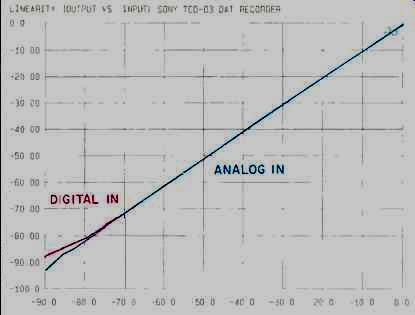
Fig. 6-Low-level linearity for analog and digital inputs.
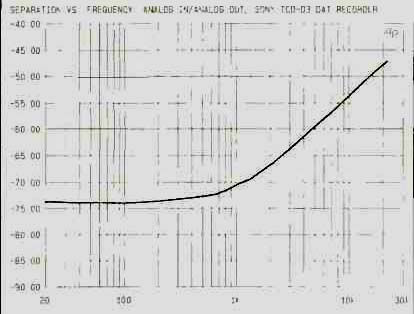
Fig. 7-Separation vs. frequency, analog inputs.
Figure 7 shows separation, which is just over 70 dB at 1 kHz, increasing to around -74 dB at lower frequencies. The decrease in separation noted at higher frequencies may well be the result of using the stereo output cable provided by Sony. (It is a dual audio cable of rather small diameter, with left and right conductors contained within a common outer insulation.) Nevertheless, a separation measurement of 54 dB at 10 kHz is hardly cause for concern, and if you are unhappy about this decrease in separation, you can always substitute separate high-quality interconnects, as long as you also use an adaptor with dual RCA jacks and a stereo mini-plug.
Use and Listening Tests
I travelled with the TCD-D3 for more than a week, and used it in a variety of locations and circumstances. As a portable DAT recorder/player, the unit stood up extremely well. I was particularly delighted with its backlit display, which made it much easier to use the recorder in poorly lit environments and at night. Equipped with a single-point stereo microphone, I successfully recorded a variety of sounds and music that would have been impossible to record so conveniently or with such high quality without this tiny unit. While travelling about the country on the last legs of an Audio-sponsored lecture tour, the TCD-D3 also proved to be the highest quality Walkman-type listening device I ever used. Sony loaned me a pair of their MDR-54 stereo 'phones so that I might audition the TCD-D3 even while aboard an aircraft. As for software, I took along some of my own, a transcription of Shostakovich's Fifth and Tenth Symphonies, dubbed from my CD versions using the digital-to-digital mode. The DAT format is ideally suited to the dynamics of Shostakovich's music.
Sony Classical has released some 10 prerecorded DAT titles as of this writing (possibly 20 or 30 will be available by the time you read this), and I was loaned a copy of their DAT issue of Vladimir Horowitz-The Last Recording, which was recorded digitally, shortly before that great pianist's death.
Listening to his rendition of the works of Chopin and other composers of piano works as reproduced by the TCD-D3 and a pair of high-quality headphones was an emotional experience that I will long remember and cherish. The sound quality offered by this tiny recorder has never been available from so small a music reproducer or at such a relatively low cost. As I listened in amazement and awe of this technological breakthrough, my thoughts turned to Thomas Edison. I wondered what he might have thought if he could hear what wondrous equipment has evolved some 114 years after his original cylinder phonograph.
-Leonard Feldman
(Source: Audio magazine, Jan. 1991)
Also see:
Sony DTC-75ES DAT Recorder (Nov. 1990)
Sony PCM-2500 Digital Audio Tape Recorder (Feb. 1989)
Akai AD-93 (DAT) Digital Audio Tape Recorder (Jun. 1988)
DECIDING ON DAT: Witness of the Persecution (Mar. 1988)
= = = =